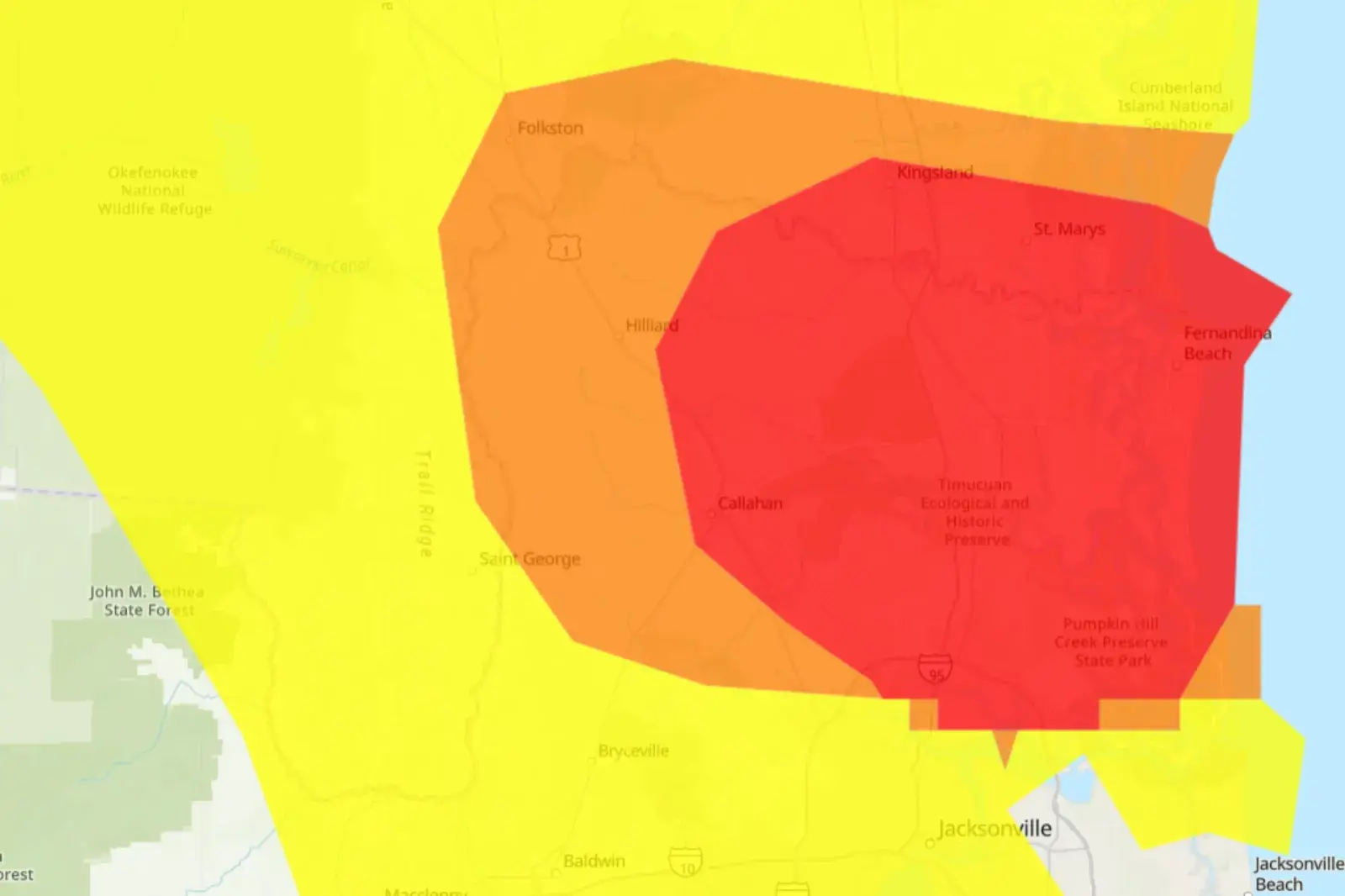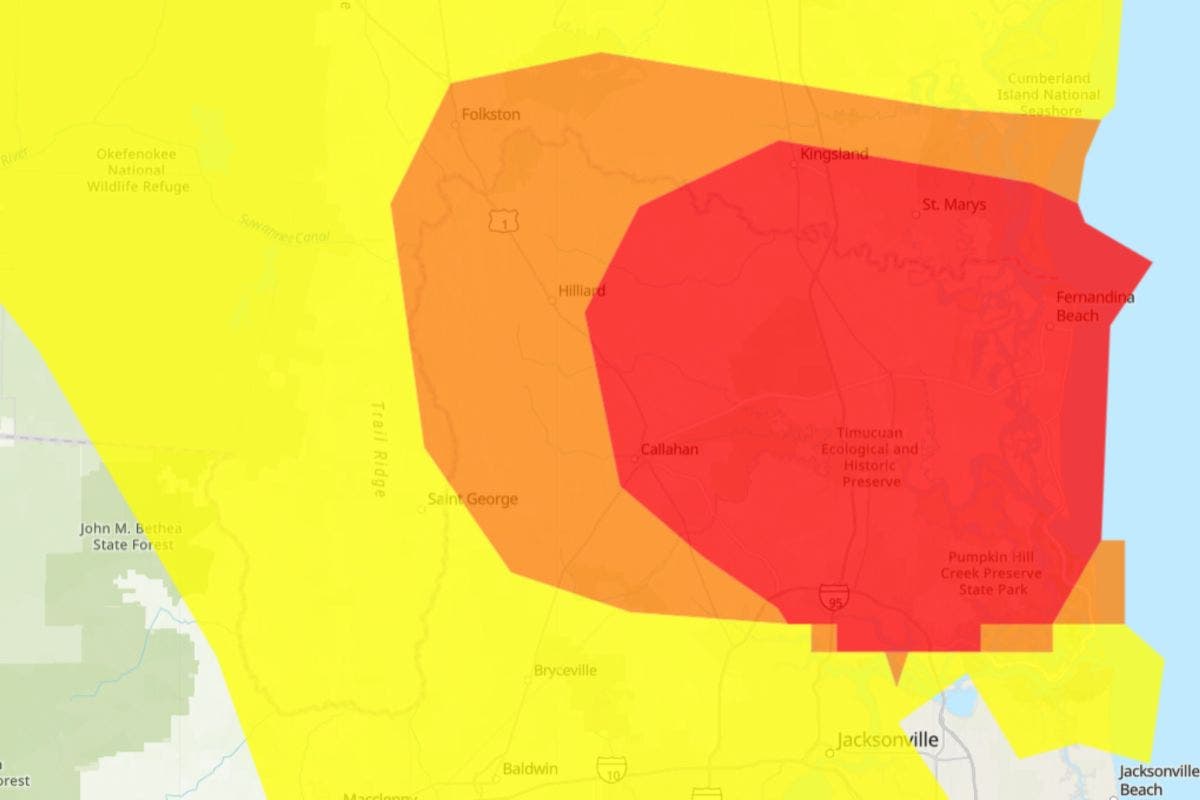Residents near Jacksonville, Florida, faced potentially harmful levels of air pollution on Thursday morning, a live map from AirNow showed.
AirNow is a partnership between the Environmental Protection Agency (EPA), National Oceanic and Atmospheric Administration, and other agencies.
Why It Matters
Experts caution that deteriorating air quality can heighten health risks for vulnerable populations, which includes older adults, children and people with respiratory illnesses.
 What To Know
What To Know
The map showed levels of fine particle (PM2.5) pollution in the “unhealthy” category spanning communities just north of Jacksonville, including Nassauville, Franklintown, Fernandina Beach, Yulee, Callahan, O’Neil, Fawnwood, and Kingsland—affecting more than 28,000 people.
When air quality falls into the “unhealthy” range, the EPA recommends that sensitive groups avoid long or strenuous outdoor activities, and consider rescheduling or moving them indoors.
The rest of the population should reduce long or intense activities, and take more breaks during outdoor activities, according to the EPA.
The Air Quality Index measures air pollution on a scale from 0 to 301 and higher:
0—50 (Green): Good — air quality is satisfactory, and air pollution poses little or no risk.51—100 (Yellow): Moderate — air quality is acceptable. However, there may be a risk for some people, particularly those who are unusually sensitive to air pollution.101—150 (Orange): Unhealthy for sensitive groups — members of sensitive groups may experience health effects. The general public is less likely to be affected.151—200 (Red): Unhealthy — some members of the general public may experience health effects; members of sensitive groups may experience more serious health effects.201—300 (Purple): Very unhealthy — health alert. The risk of health effects is increased for everyone.301 and higher (Maroon): Hazardous — health warning of emergency conditions. Everyone is more likely to be affected.What People Are Saying
The Environmental Protection Agency (EPA) says on its website: “The size of particles is directly linked to their potential for causing health problems. Small particles less than 10 micrometers in diameter pose the greatest problems, because they can get deep into your lungs, and some may even get into your bloodstream.
“Exposure to such particles can affect both your lungs and your heart. Numerous scientific studies have linked particle pollution exposure to a variety of problems, including:
premature death in people with heart or lung diseasenonfatal heart attacksirregular heartbeataggravated asthmadecreased lung functionincreased respiratory symptoms, such as irritation of the airways, coughing or difficulty breathing.
“People with heart or lung diseases, children, older adults, minority populations, and low socioeconomic status populations are the most likely to be affected by particle pollution exposure, either because they are more sensitive or may have higher exposures.”
What Happens Next
AirNow’s map is regularly updated.
Regional weather forecasts are updated by the National Weather Service on its website and through its social media channels.
Update, 10/23/2025, 8:14 a.m. ET: This article was updated with additional information

